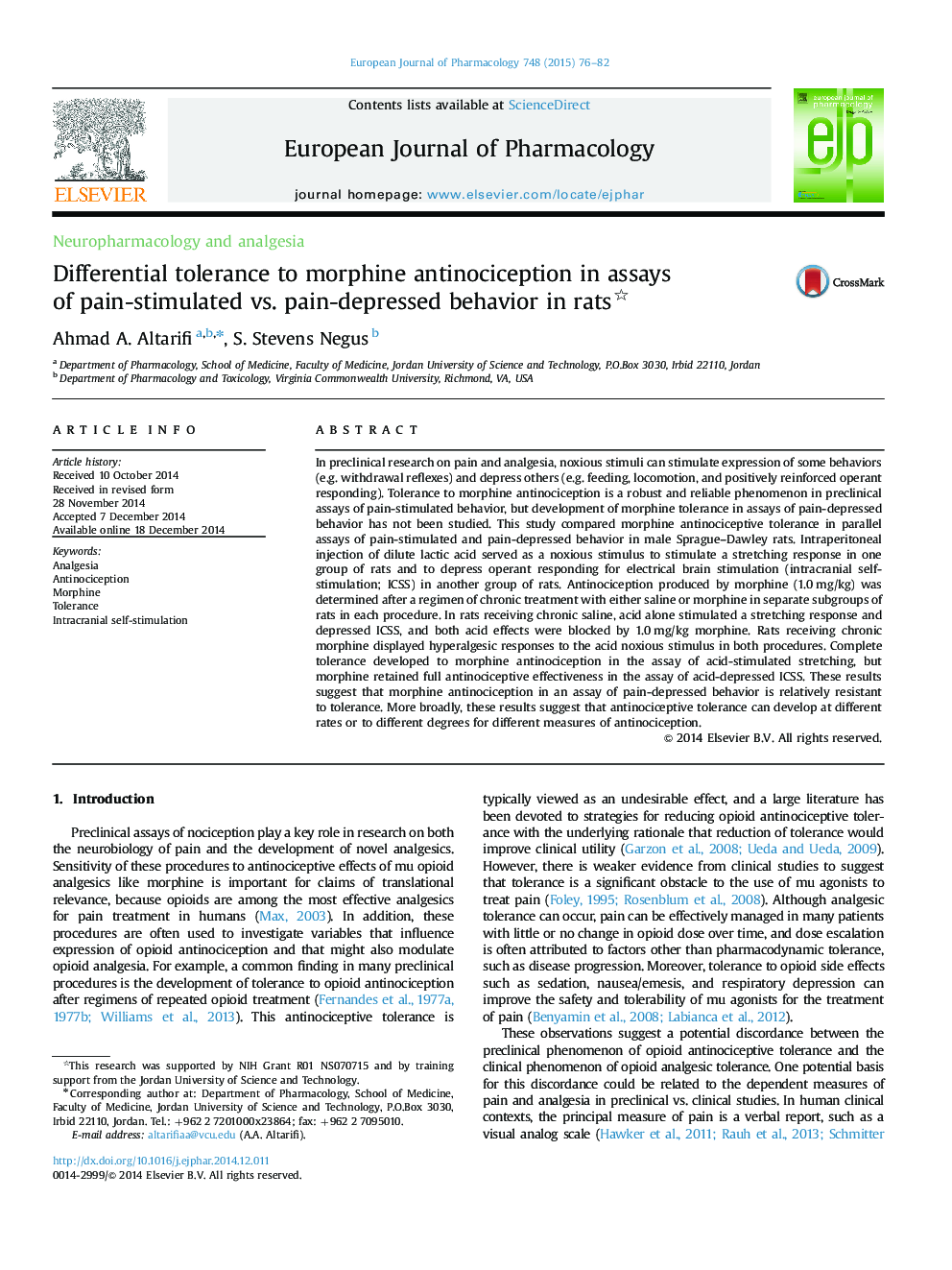| کد مقاله | کد نشریه | سال انتشار | مقاله انگلیسی | نسخه تمام متن |
|---|---|---|---|---|
| 2531528 | 1558933 | 2015 | 7 صفحه PDF | دانلود رایگان |
In preclinical research on pain and analgesia, noxious stimuli can stimulate expression of some behaviors (e.g. withdrawal reflexes) and depress others (e.g. feeding, locomotion, and positively reinforced operant responding). Tolerance to morphine antinociception is a robust and reliable phenomenon in preclinical assays of pain-stimulated behavior, but development of morphine tolerance in assays of pain-depressed behavior has not been studied. This study compared morphine antinociceptive tolerance in parallel assays of pain-stimulated and pain-depressed behavior in male Sprague–Dawley rats. Intraperitoneal injection of dilute lactic acid served as a noxious stimulus to stimulate a stretching response in one group of rats and to depress operant responding for electrical brain stimulation (intracranial self-stimulation; ICSS) in another group of rats. Antinociception produced by morphine (1.0 mg/kg) was determined after a regimen of chronic treatment with either saline or morphine in separate subgroups of rats in each procedure. In rats receiving chronic saline, acid alone stimulated a stretching response and depressed ICSS, and both acid effects were blocked by 1.0 mg/kg morphine. Rats receiving chronic morphine displayed hyperalgesic responses to the acid noxious stimulus in both procedures. Complete tolerance developed to morphine antinociception in the assay of acid-stimulated stretching, but morphine retained full antinociceptive effectiveness in the assay of acid-depressed ICSS. These results suggest that morphine antinociception in an assay of pain-depressed behavior is relatively resistant to tolerance. More broadly, these results suggest that antinociceptive tolerance can develop at different rates or to different degrees for different measures of antinociception.
Journal: European Journal of Pharmacology - Volume 748, 5 February 2015, Pages 76–82
